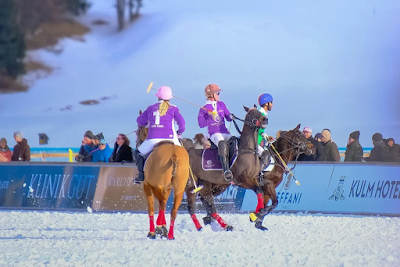Understanding The Handicap System of Polo
Polo, often called the 'King of Sports' for its ancient legacy, has evolved through the ages. With this evolution came new rules that redefined it as a modern game.
Among the many evolving aspects of polo, one of the most distinctive is its complex and intriguing handicap system. Like in other sports, it ranks players based on ability through a defined set of rules—but polo’s system stands out for its unique structure and impact on the game.
Birth of Polo and Early Competitive Play
Polo dates back over 2,000 years, with its origins in ancient Persia before spreading across Asia. In its early days, it wasn’t seen as a competitive sport but rather as a form of cavalry training and recreation. The game reached England in the mid-19th century, when British tea planters in Manipur witnessed locals playing and introduced it back home.
During medieval times, polo remained an amateur pursuit, enjoyed mainly by nobles and kings as a leisure activity. As the sport gained global popularity, it attracted the interest of prestigious clubs like Hurlingham in England and Meadowbrook in the U.S. With skilled players and teams emerging, the need arose for a structured system to keep matches competitive, balanced, and engaging.
Start of the Handicap System
The British formalised polo’s handicap system in the late 19th century, with the first documented game using it held by the Hurlingham Polo Association (HPA) around 1876–77. The concept was simple yet effective: players were assigned numerical ratings based on their recent performance and skill, helping differentiate seasoned players from novices. The handicap scale initially ranged from 0 to 10—the pinnacle of individual polo achievement. A team’s total handicap was the sum of its players’ ratings. To ensure fair play, if a 12-goal team played against a 10-goal team, the latter would start with a two-goal advantage.
As polo’s popularity began, major countries like Argentina and the United States began to adopt this handicap system. The local tournaments and events around these regions gave the authorities and people in charge a chance to develop their methods for accessing and updating players’ handicaps.
The early adoption of this handicap system gave Argentina the maximum boost, making them miles ahead of other countries when competing in polo. Soon after the establishment of the Argentine Polo Association (AAP), the refinement of players became more meticulous, and the country started producing some of the finest holders of mallets, such as Adolfo Cambiaso, who reached the 10-goal handicap mark and set many benchmarks for upcoming generations of players.
Working of the Handicap System
The scale (0-10 handicap) is still prevalent today, as most professionals aim for that 10-goal mark. However, it is not that simple, as the handicap system is not solely based on the number of goals scored by a player but reflects several qualities, including technical ability, horsemanship, strategy, team play, and sportsmanship.
The key factors include:
Staying consistent in his/her performance, The ability to ride and control his ride (equine) at high speeds, Tactical understanding of the game and contributing to team success, Scoring as well as defensive abilities.
Also, in some countries, low-level players or beginners are seen to carry a negative handicap, such as -2, making the handicap system effective in ranking all players.
Why Handicap System Matters?
The beauty of polo lies in equally balanced teams that pay close attention to individual prodigies and teamwork. Without the handicap system, it is quite predictable that polo would become a stale game only meant for the ultra-rich and finely funded teams.
Significance:
Encourages fairness by giving the less experienced teams a chance (points advantage). Promotes development by providing a clear path for players and teams to aim for. Spectator enjoyment is kept high as the handicap system promotes fairness. Creates diversity by having multiple formats of tournaments, such as low-goal, high-goal, etc.
Moreover, the 10-goal handicap, the highest honour in polo, provides players with an extra sense of effort that drives them to work hard and claim this prestigious honour.
Challenges and the Road Ahead
Like any other system, the handicap system of polo was also subjected to criticism. Some people argued that the rules were framed, or instead made, due to club politics. In some parts of the world, the agencies and associations question other countries on how their players are evaluated and marked, which often leads to confusion.
Nevertheless, most of the polo community believes that despite some imperfections, the handicap system is indispensable and a viable way to promote the sport excitingly and competitively. As polo fans, we can only appreciate the handicap system of polo, which brings us more enjoyable games and enjoyable memories to cherish. Nevertheless, most of the polo community believes that despite some imperfections, the handicap system is indispensable and a viable way to promote the sport excitingly and competitively. As polo fans, we can only appreciate the handicap system of polo, which brings us more enjoyable games and enjoyable memories to cherish.





Comments
Post a Comment